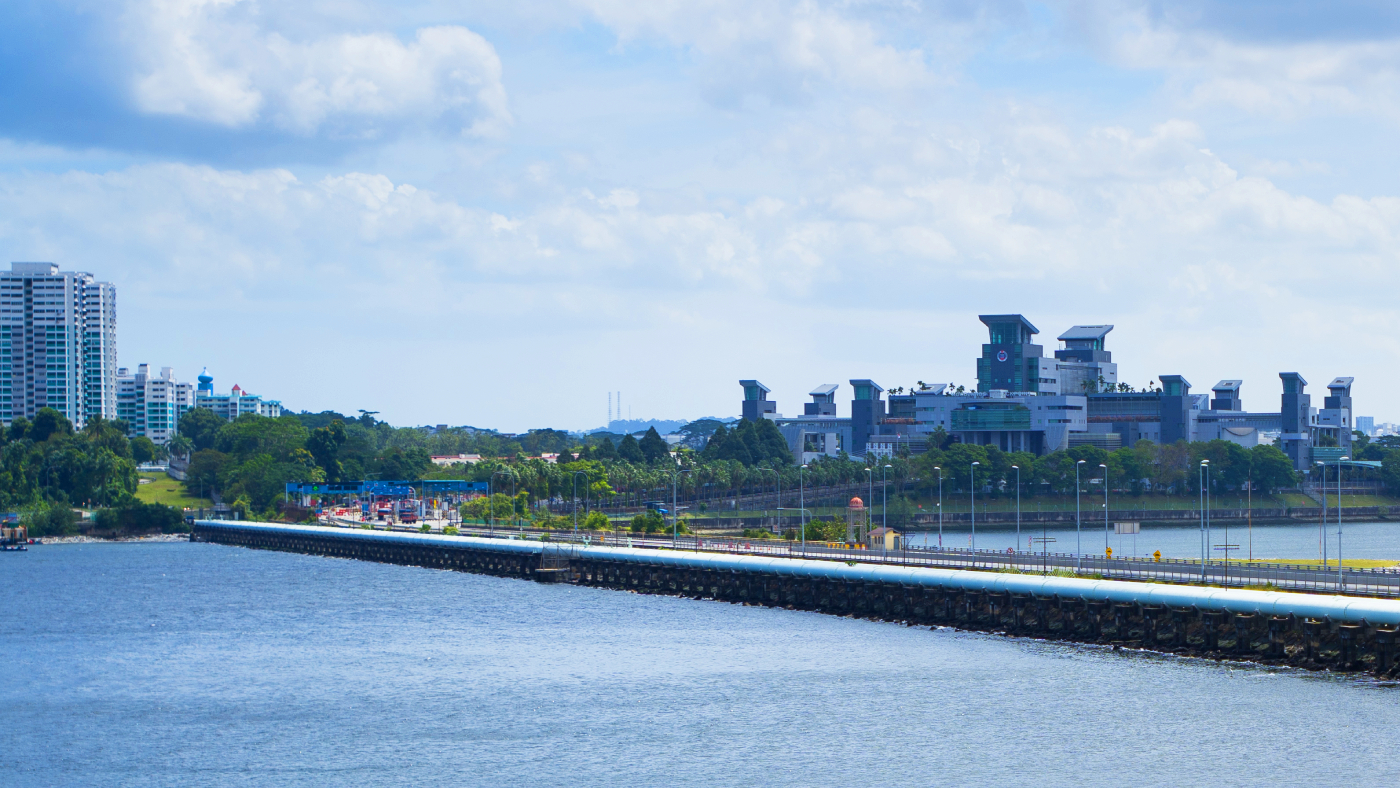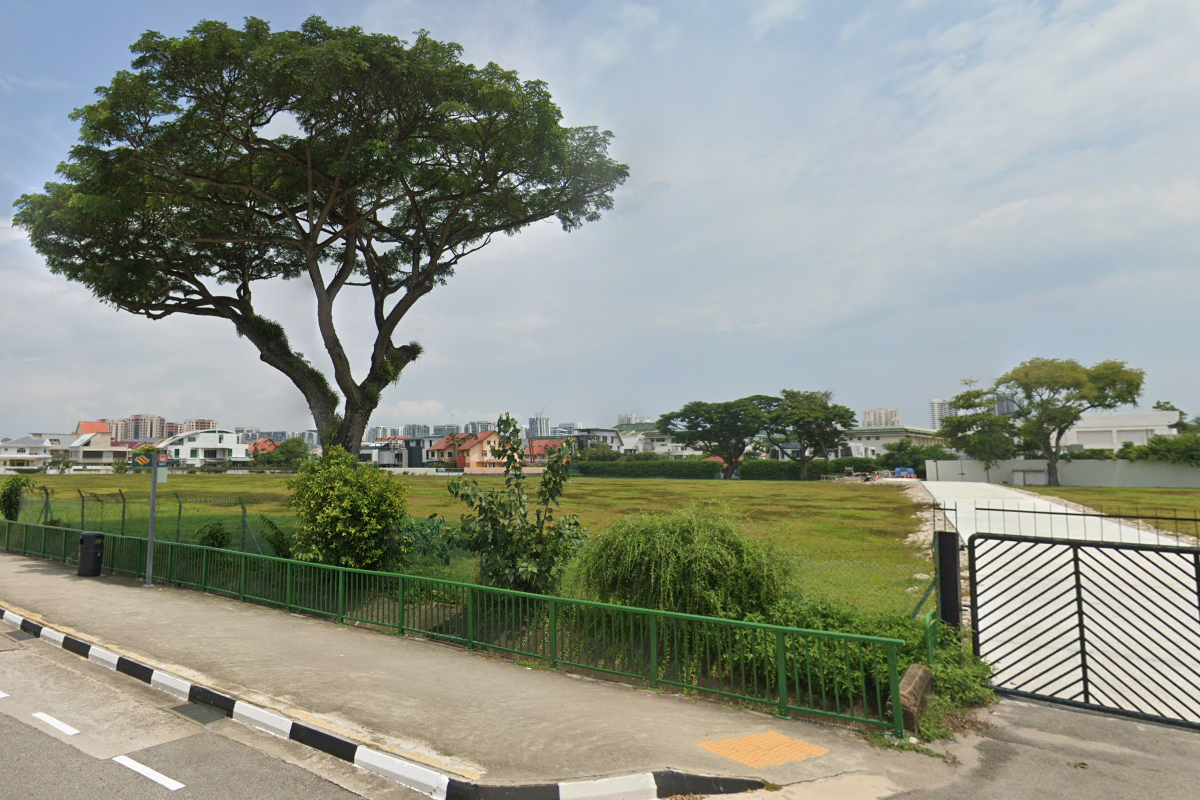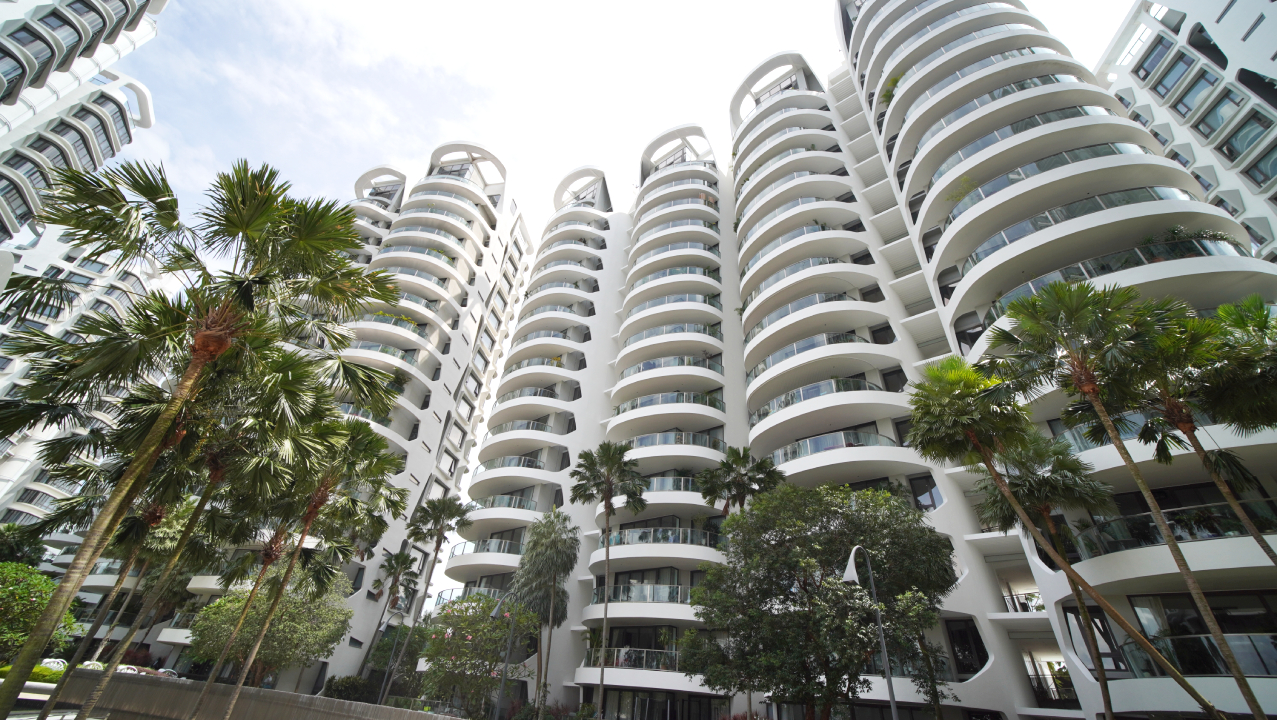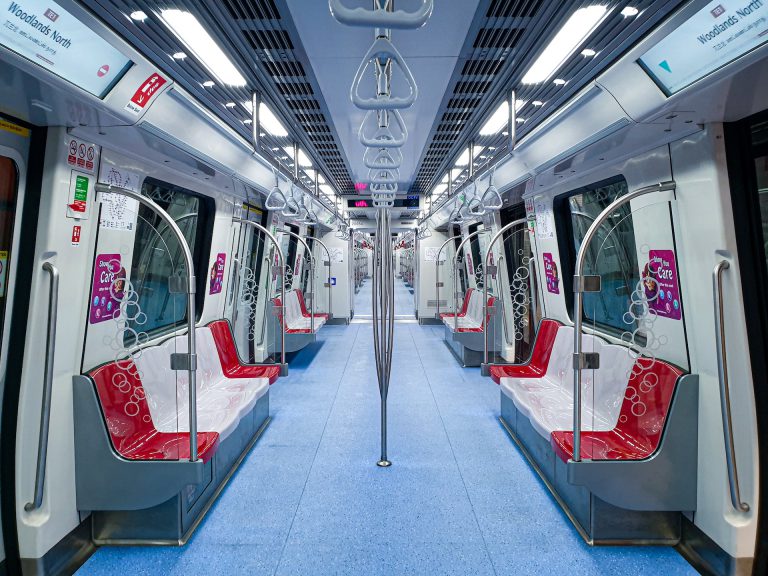Woodlands Master Plan: How Has Its Urban Transformation Progressed Ten Years On?
- By Stanley Lim
- 5 mins read
- HDB, Private Residential (Non-Landed)
- 10 Oct 2024
Slightly more than a decade ago, the Urban Redevelopment Authority (URA) released its Draft Master Plan 2013, revealing the then-current blueprint that would guide Singapore’s land use over the next 10 to 15 years.
Within it, several projects were outlined to further anchor Woodlands’ status as an up-and-coming regional hub. This entailed fully transforming the Northern town into a vibrant residential and commercial district, not unlike its contemporaries in the East and West, Tampines and Jurong.
Subsequently, when the curtains were pulled back for URA Master Plan 2014, several exciting projects were confirmed for Woodlands. The core developments include Woodlands Regional Centre, Woodlands Health Campus, as well as new stations on the Thomson-East Coast line.
Ten years on, how have these projects unfolded to shape Woodlands’ identity as a “star destination of the North”?
Woodlands Regional Centre
As part of bigger plans to pair quality living with career opportunities in the North, Woodlands Regional Centre will serve as a cornerstone for the zone’s development. Doing so sets the stage for Woodlands’ emergence as a key location for fostering closer business links with neighbouring Malaysia, as well as the rest of the ASEAN region.
In large part, the decision to make Woodlands Regional Centre a reality is driven by its strategic position near the Johor-Singapore Causeway, granting it the potential to be developed into a vital economic gateway accompanied by housing opportunities in neighbouring areas.
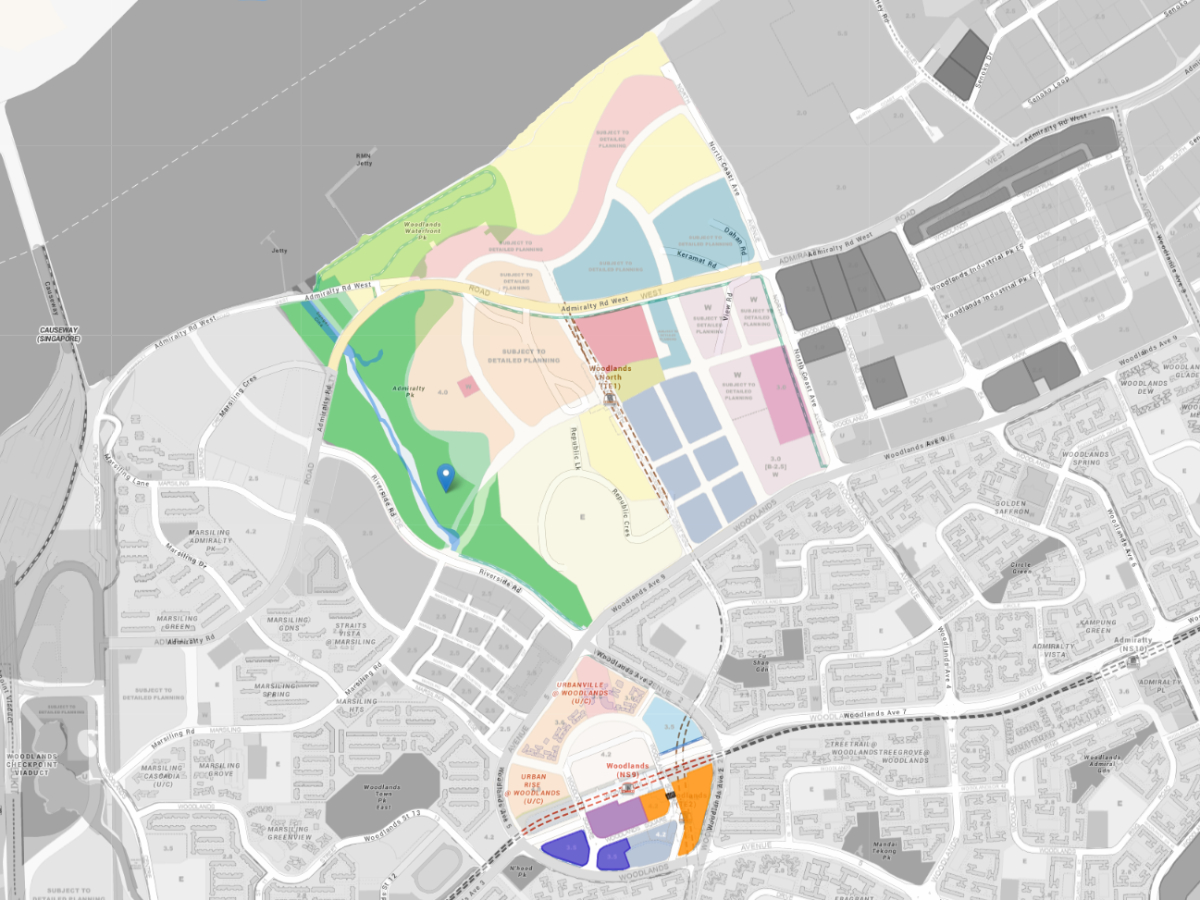
Source: URA, ERA Research and Market Intelligence
First announced by then-Minister for National Development Khaw Boon Wan, Woodlands Regional Centre is collectively comprised of 100ha of developable land sub-divided into two precincts: Woodlands Central and Woodlands North Coast.
Woodlands Central– A Thriving Community and Business Node
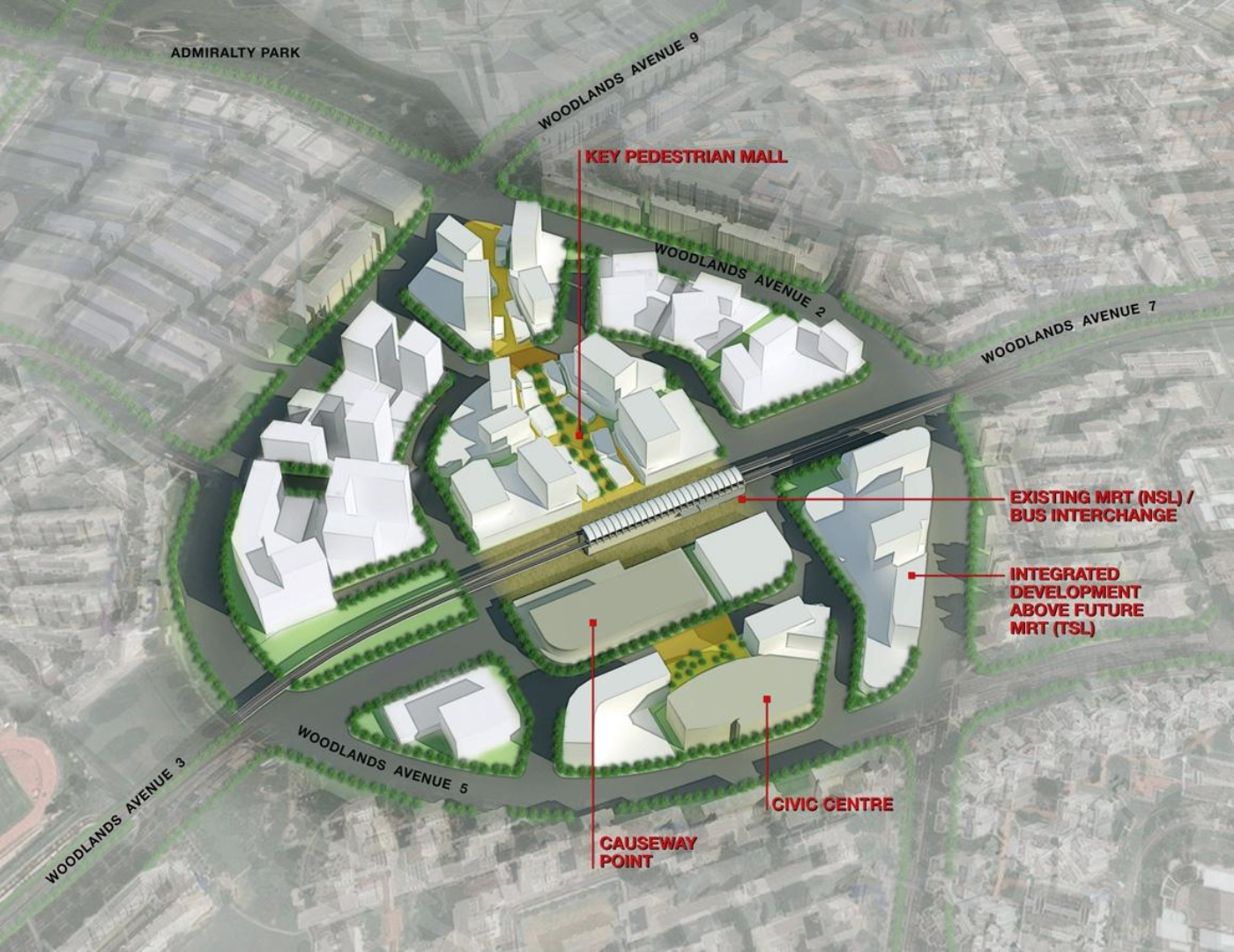
Source: URA
Envisioned as a new lifestyle and commercial hub, Woodlands Central is slated to house a range of office spaces, retail malls, entertainment options, and residential developments.
The precinct’s 30ha teardrop-shaped site also encompasses existing key destinations in the neighbourhood. These include Causeway Point shopping centre, Woodlands Civic Centre, as well as Woodlands MRT station.
To support the residential needs of future residents, Woodlands Central was also announced in 2017 to be one of three towns to receive an injection of new HDB flats. As part of the third phase of the ‘Remaking Our Heartland’ (ROH) programme, Woodlands will see 10,000 new units built at developments sited near Woodlands Central and Woodlands North Coast.
Woodlands North Coast – Housing Precinct and Economic Hub by the Waterfront
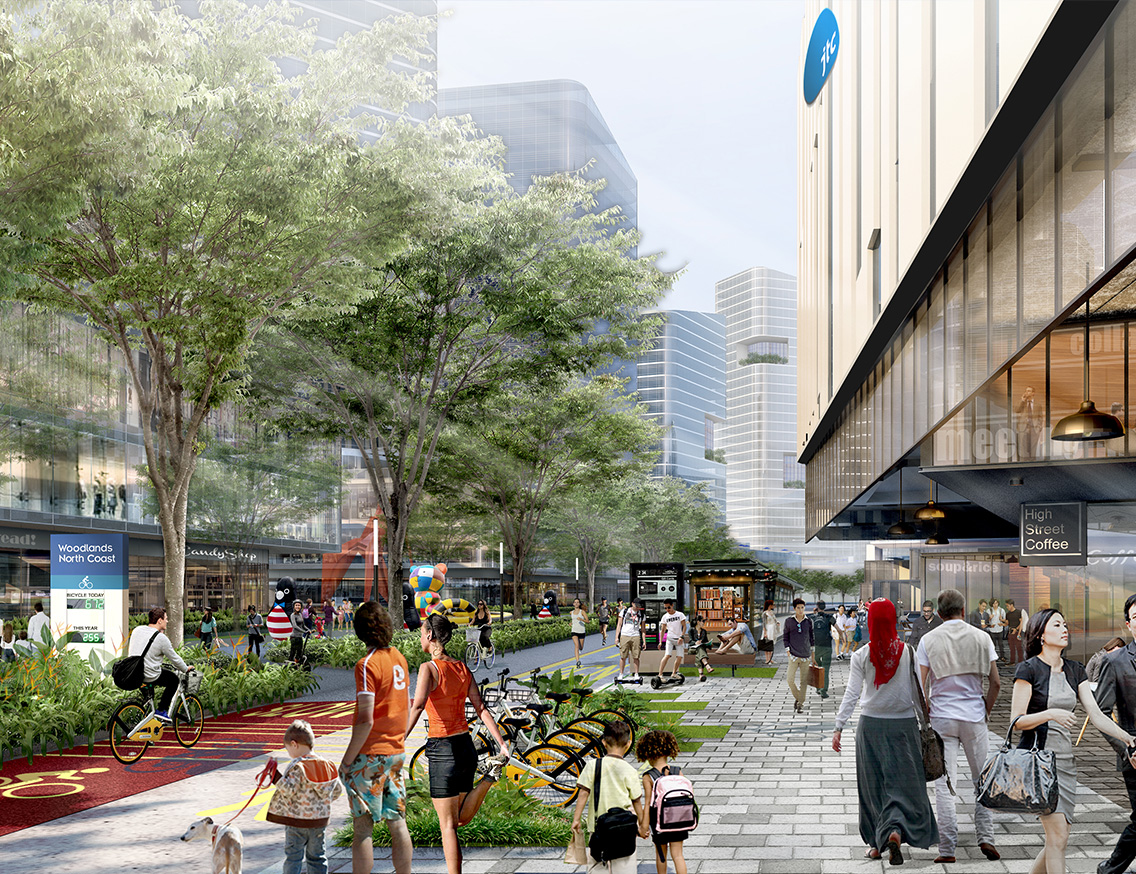
Source: JTC
Woodlands North Coast, on the other hand, spans across a larger 70ha plot located further up of Woodlands Central, putting it in close proximity to Republic Polytechnic, and more crucially, the Woodlands waterfront. This location positions it as a gateway to Malaysia, while also setting the stage for future coastal residential projects in the neighbourhood.
In 2013, plans for the North Coast Innovation Corridor (NCIC) were announced as well. Stretching from Woodlands to Punggol, this planned commercial belt will see Woodlands Regional Centre coming to the fore as Singapore’s primary business park cluster in the North with the potential to provide as many as 100,000 new jobs upon its completion.
What’s happening at Woodlands Regional Centre presently?
At present, plans to rejuvenate Woodlands Regional Centre are well underway, with several key milestones from its Master Plan already successfully met during the intervening years since it was initially announced in 2014.
Woodlands Central: New office spaces and homes for residents
In 2020, Woodlands witnessed the opening of Woods Square, its first mixed-use development featuring Grade A office spaces. Jointly developed by Far East Organisation, Far East Orchard, and Sekisui House, Woods Square comprises four commercial towers with a total of 494 office units and 39 retail units.
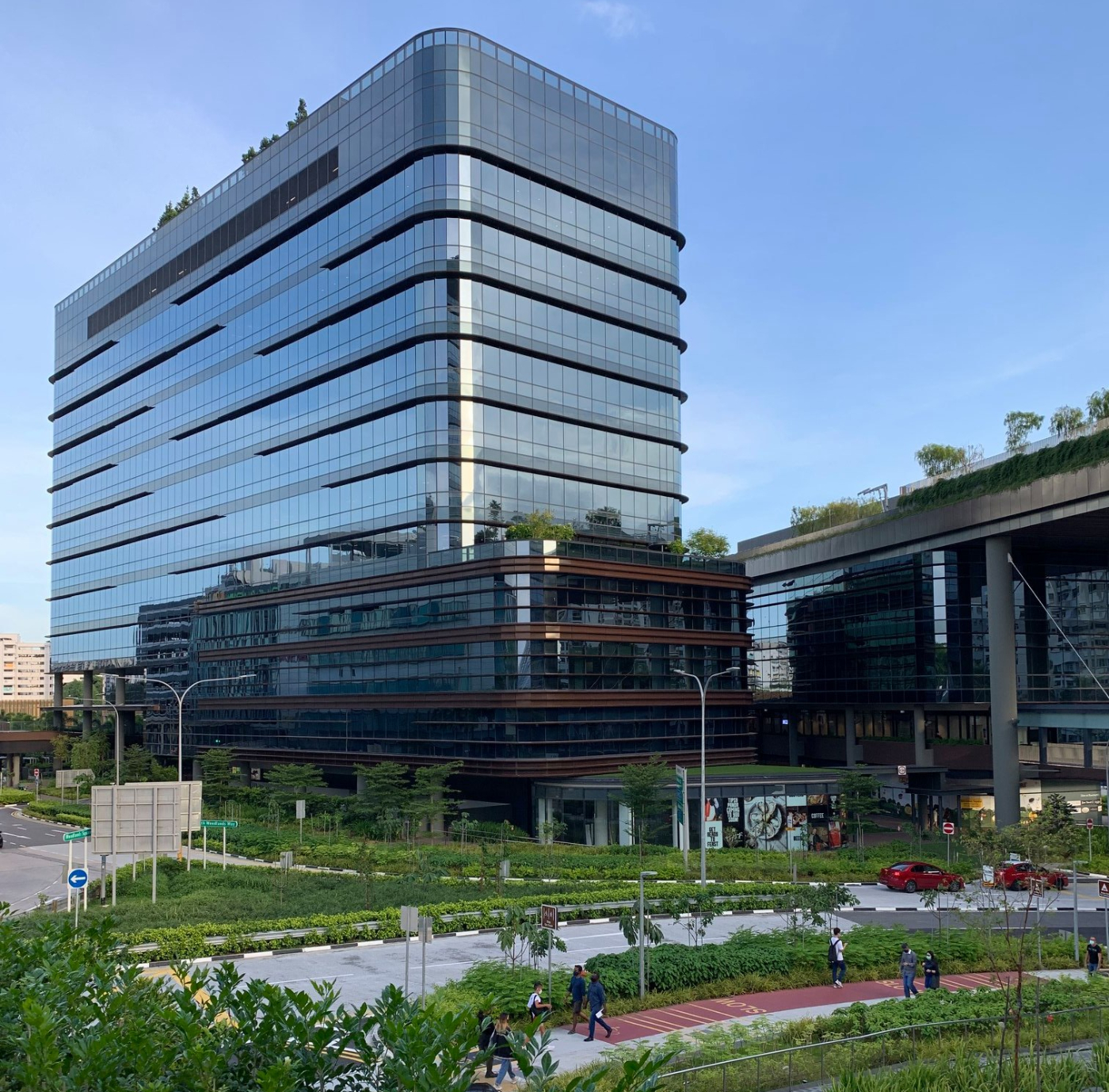
Source: JTC
Apart from providing businesses a viable location for setting up branch offices in North Singapore, Woods Square’s debut also complements the Government’s aim to decentralise employment centres by bringing employment opportunities and office amenities closer to suburban towns away from the city core.
Relating to this objective, two Build-to-Order (BTO) projects have already been launched in the Woodlands Central precinct: UrbanVille @ Woodlands (1,785 units) and Urban Rise @ Woodlands (848 units). UrbanVille was introduced during August 2020’s BTO exercise and is expected to be completed by 2026. On the other hand, Urban Rise, launched in December 2023, is slated for completion in 2028.
Woodlands North Coast: Fresh opportunities and infrastructure for businesses
Though it may be some time before Woodlands North sees BTO flats of its own along the country’s northern coastline, the area has experienced growth in other areas, particularly in its industrial capabilities. This progress will contribute to the NCIC’s goal of transforming Singapore’s northern coast into a vibrant commercial hub brimming with new technologies and ideas.
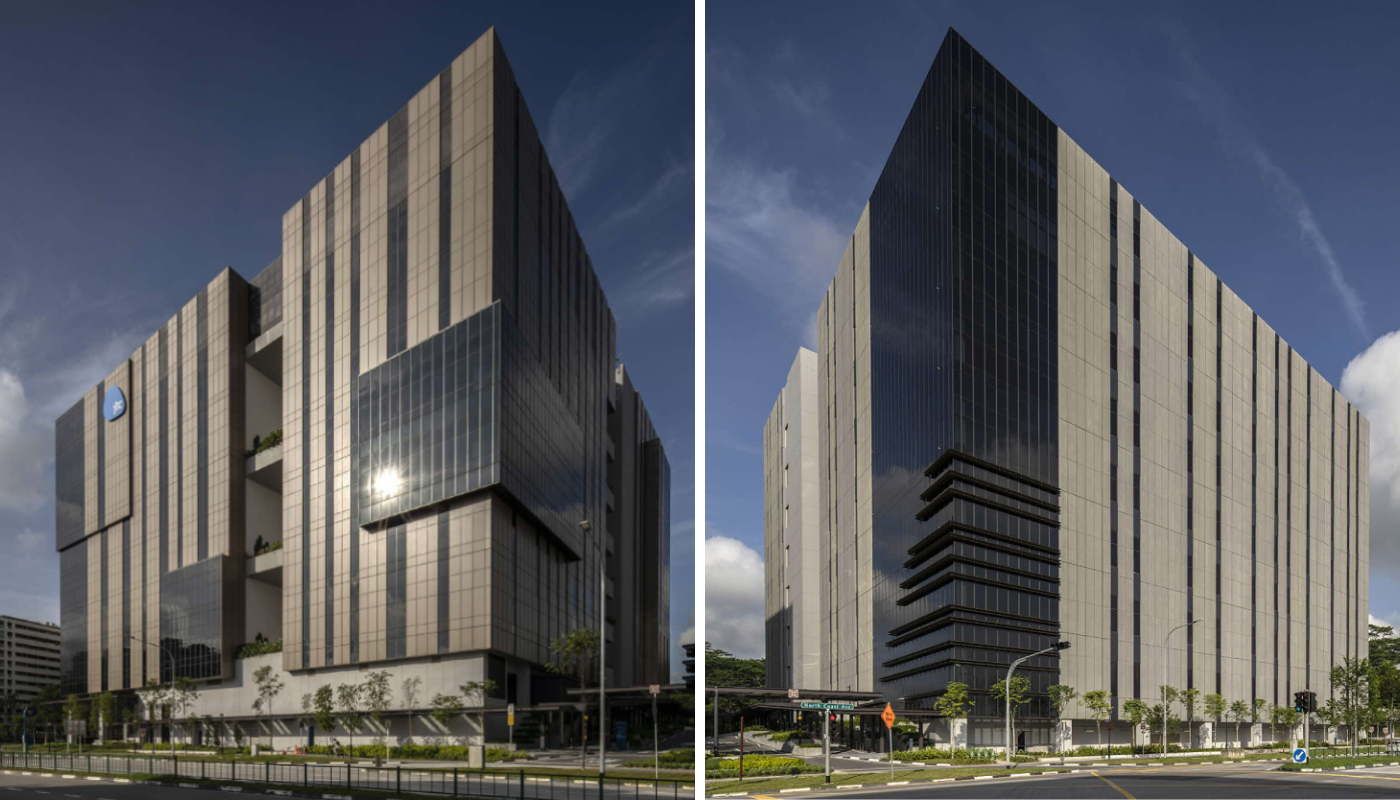
Source: JTC
Industrial projects completed by Jurong Town Corporation (JTC) thus far, such as 1 North Coast and 7 North Coast, represent a progressive step forward to realising this vision.
Both developments offer unique advantages for Singapore businesses; while 1 North Coast’s flexible zoning of 30-70% allows for both manufacturing and non-industrial functions to be housed under the same roof, 7 North Coast is optimised to serve as a strategic hub for industrialists operating locally and regionally.
Thus far, notable companies with a presence at Woodlands North Coast include Micron, a semiconductor giant with global reach, and Illumina, a biotechnology firm and manufacturer of DNA sequencing machine technology.
Woodlands Health Campus: A dedicated healthcare complex in the North
In addition to the developments mentioned above, 2014 also marked the announcement of the Woodlands Health Campus—the town’s first-ever public hospital to be constructed on a 7.7ha site near the then-upcoming Woodlands South MRT station.
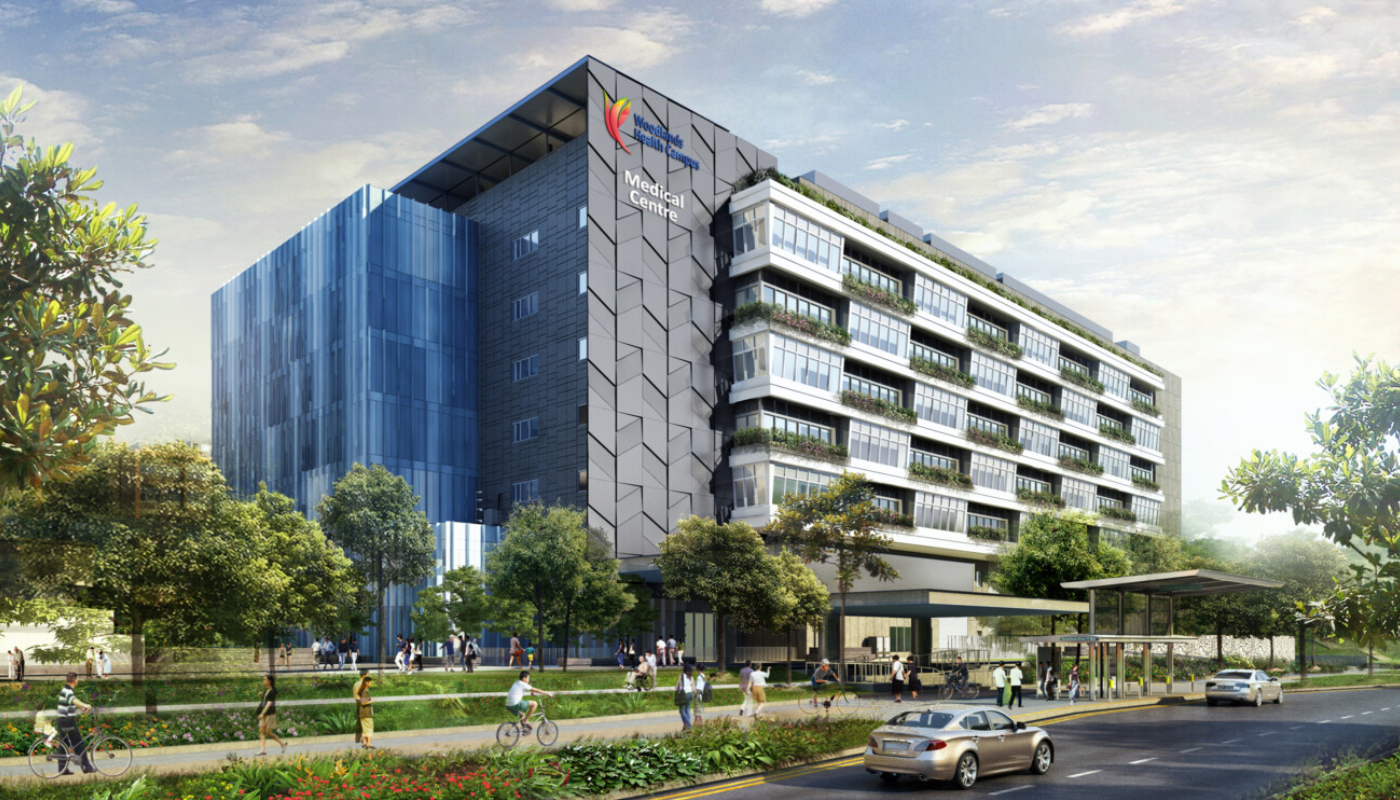
Source: Woodlands Health Campus
Plans were laid out for Woodlands Health’s creation to address the healthcare needs for the North Region’s growing population, with a focus on providing access to acute, community, and elderly care services.
Close to a decade later, Woodlands Health welcomed its first patients in December last year. Though only specialist outpatient clinics and a limited number of community hospital beds were made available during the first phase of its opening, the hospital has since fully opened the rest of its facilities as of May 2024, ranging from critical care units to a healing ‘Parkland’ designed in collaboration with the National Parks Board.
Thanks to its interconnected medical spaces, Woodlands Health is able to implement an innovative care model. Such an approach enables patients to access a full spectrum of health services—including medical examinations and rehabilitation—without needing to visit different hospitals for follow-up treatments.
In total, Woodlands Health houses 1,000 acute and community beds, along with nearly 400 beds in its long-term care tower. The hospital’s infrastructure allows it to expand its capacity to up to 1,800 beds in response to future demand and/or bed crunches as well.
Improved transportation links: North-South Corridor and Thomson-East Coast MRT Line
Beyond the improved precincts and healthcare facilities, URA’s Master Plan 2014 envisioned Woodlands as a well-connected regional hub following the development of two key transportation projects: the Thomson-East Coast Line and the North-South Corridor.
A key component in enhancing Woodlands’ transportation network, the Thomson-East Coast Line (TEL) will introduce three new MRT stations: Woodlands North, Woodlands (TEL extension), and Woodlands South.

Source: LTA
As of January 2020, all of the abovementioned stations are open to the public. Collectively, these new stops provide end-to-end train connectivity for the entirety of the Woodlands Regional Centre, while also giving residents a new direct route from their homes to the heart of Singapore’s downtown business core.
Similarly, the North-South Corridor (NSC) is set to enhance multi-transport access, offering not just an improved vehicular route, but also a smoother commute for cyclists and pedestrians traveling downwards from the upper reaches of Singapore.
Initially envisioned as the North-South Expressway in 2011, this 21.5km vehicular route was re-designed into its current form comprising a viaduct, a tunnel, as well as ground-level streets. Doing so would allow more space to be allocated towards pedestrian corridors, including footpaths, cycling routes, priority lanes for public transport, and even green community spaces.
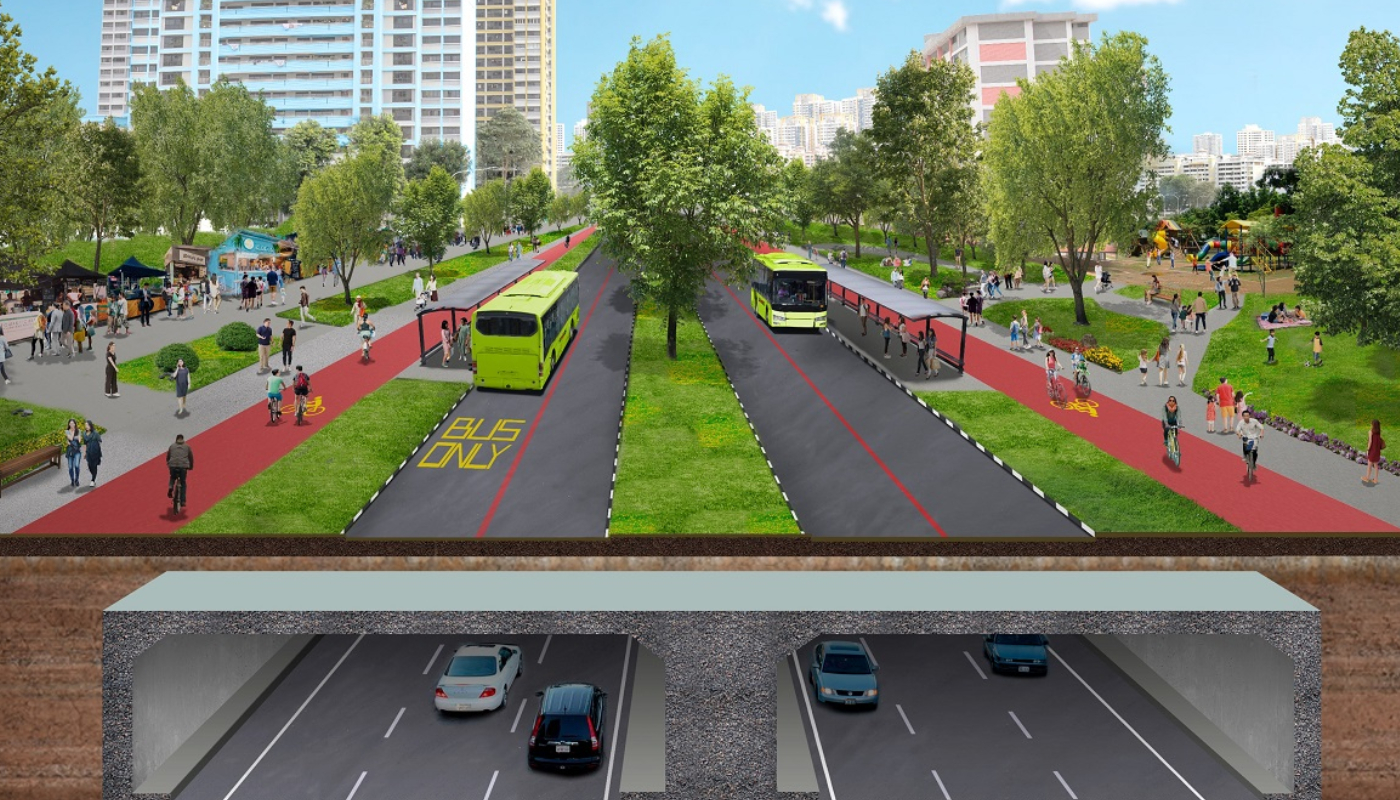
Source: LTA
At present, the NSC is still under construction and it is slated to open in phases starting from 2027, with the viaduct from Admiralty Road West to Lentor Avenue being the first section to become operational.
Once it’s fully completed, the NSC will streamline travel to and from the city, thus relieving road congestion and improving commute times for residents living in towns situated along Singapore’s North-South transport spine—Woodlands included.
What’s next for Woodlands?
Beyond the projects outlined in past and present Master plans, further developments are on the horizon for Woodlands and its surrounding areas.
For starters, the upcoming Johor Bahru-Singapore Rapid Transit System (RTS) will aid cross-border travel by offering a fast and efficient alternative to the Causeway by end-2026. This new Light Rail Transit (LRT) system connects Woodlands North Station to Johor’s Bukit Chagar Station, and is capable of accommodating up to 10,000 commuters per hour in each direction during peak travel periods.
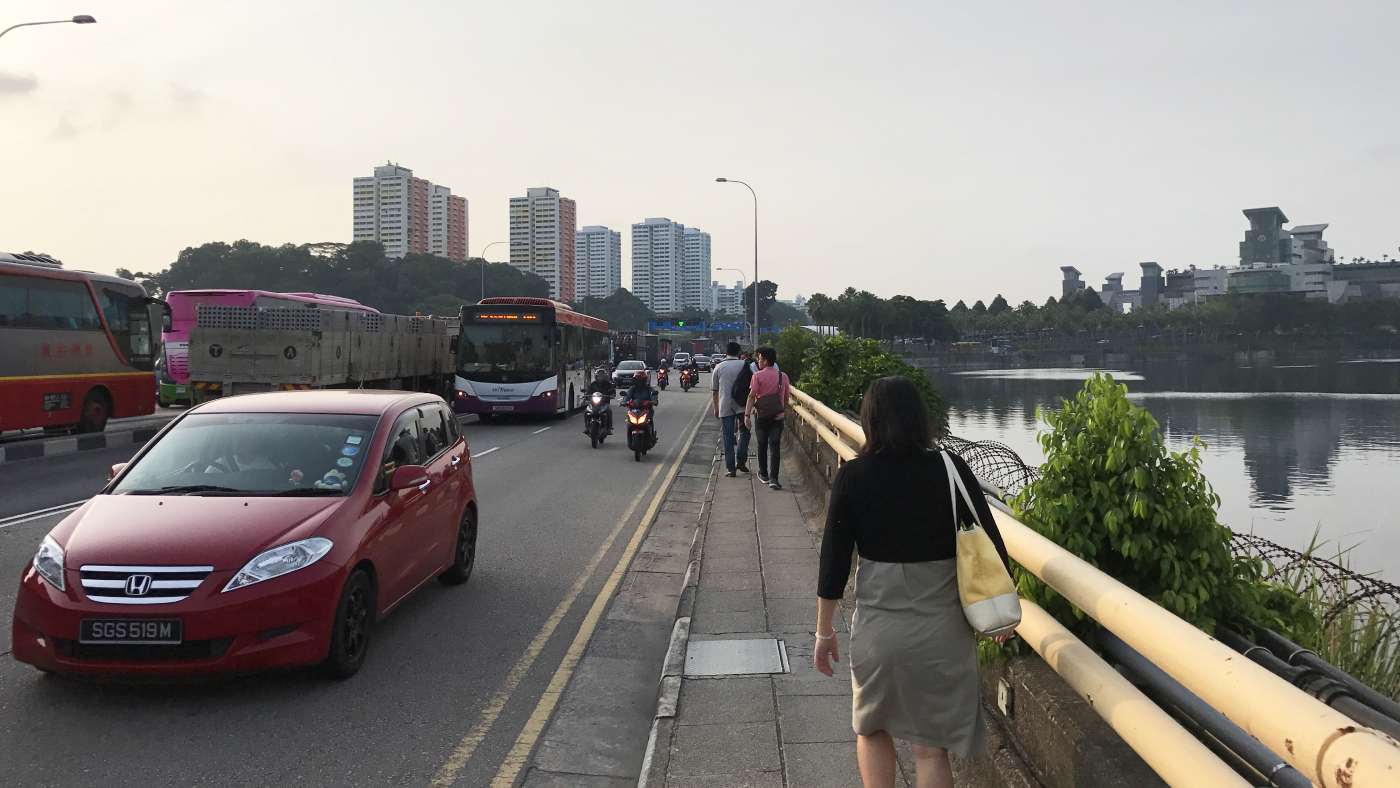
In 2025, works to expand Woodlands Checkpoint to five times its current size will also commence, bringing it from 19ha to 95ha with redeveloped infrastructure at the Old Woodlands Town Centre. The future extension is set to become fully operational by 2032, contributing to faster customs clearance times, while relieving congestion from high traffic volumes.
Viewed collectively with ongoing Master Plan initiatives, these projects will strengthen Woodlands’ position as the North’s primary regional centre, hence potentially spurring property growth in the area as well.
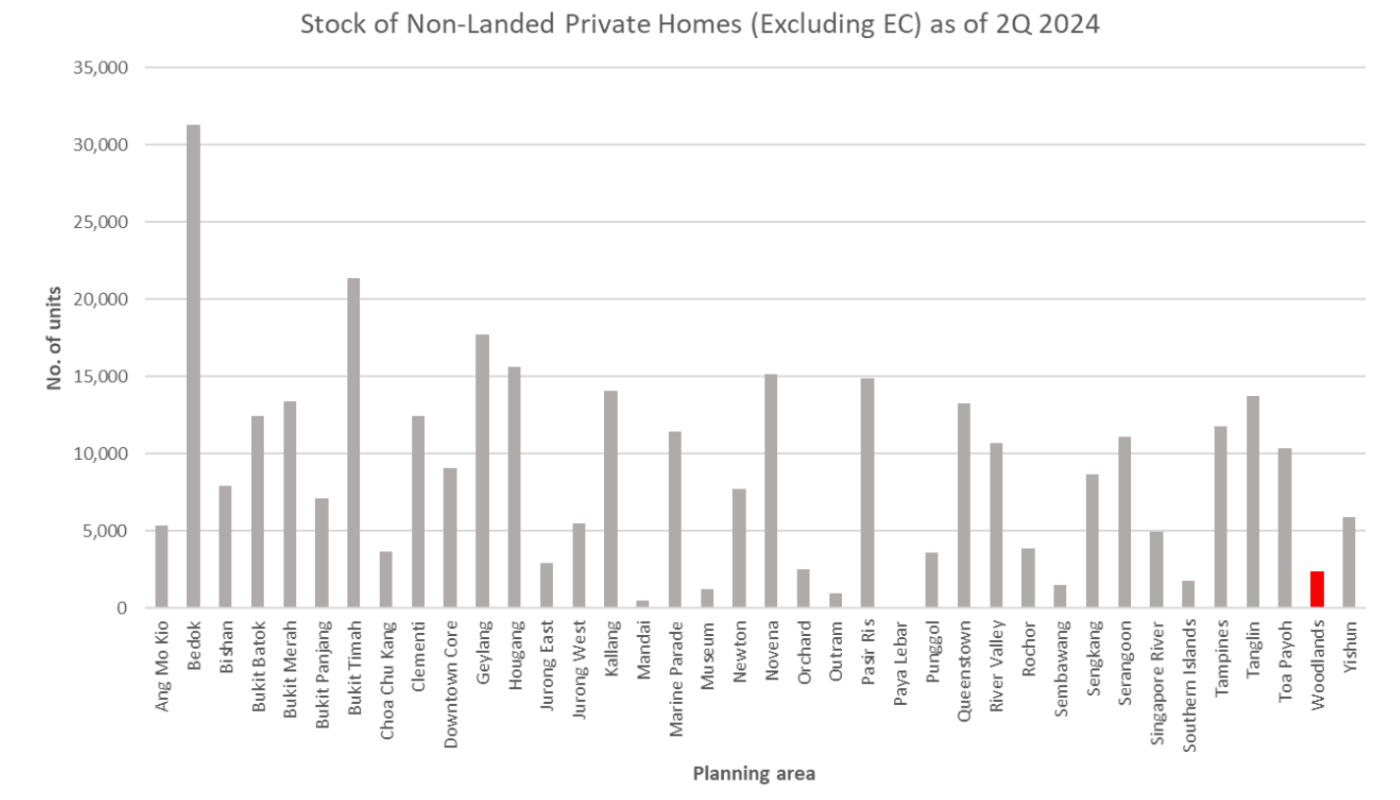
Source: URA Realis, ERA Research and Market Intelligence
While Woodlands currently has one of the lowest inventories of non-landed private homes (excluding executive condominiums) among the various planning areas in Singapore as of 2Q 2024, the upcoming launch of Norwood Grand, a 348-unit, 99-year leasehold development, is set to provide a timely injection of brand-new stock in the area.
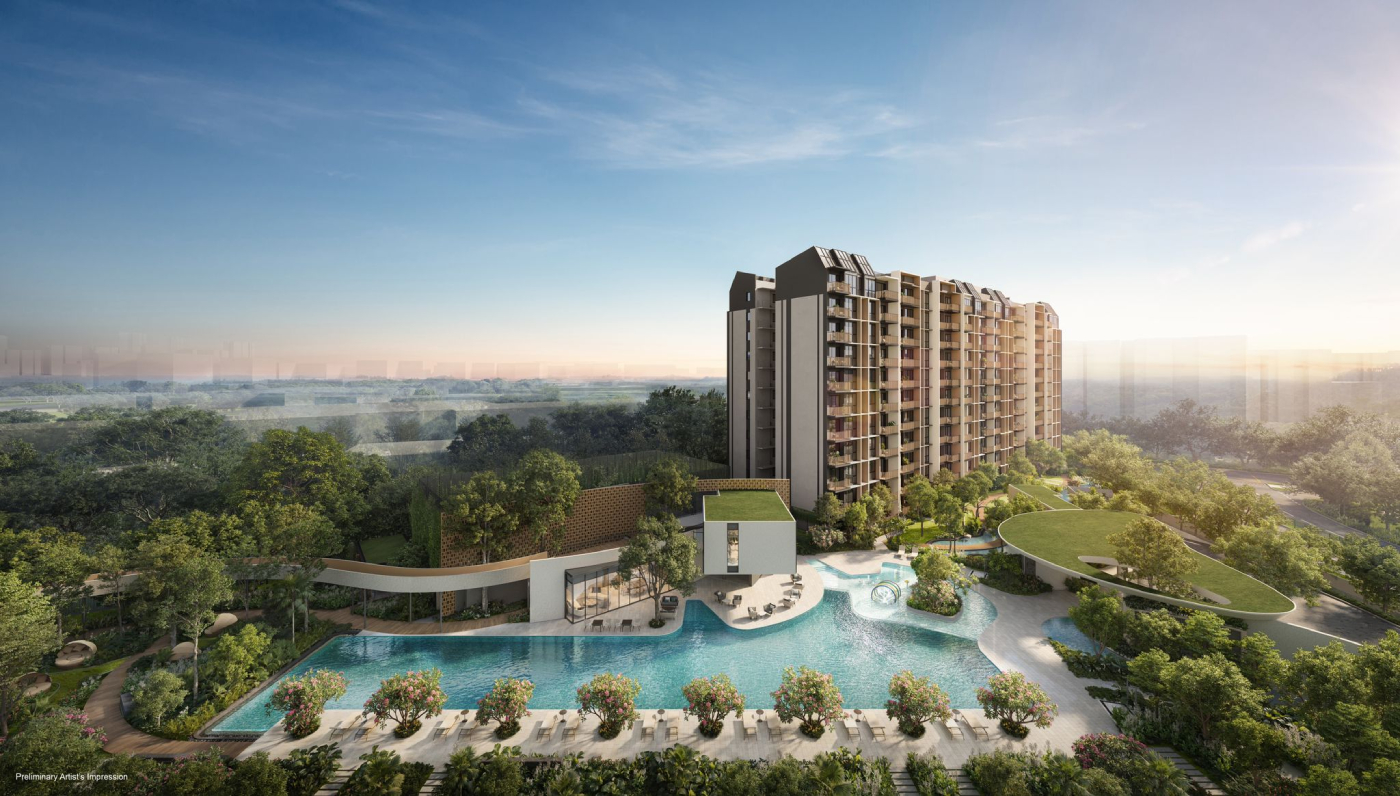
Source: City Developments Limited
As such, homebuyers, particularly those keen on a private condo, may find Woodlands appealing as a promising location.
With additional private and public housing, new infrastructure, and transportation upgrades on the horizon, Woodlands is poised for future growth and development in more ways than one.
Not only do these projects aid in unlocking Woodlands’ potential as a highly desirable town for residents, they’ll also set the stage for its eventual transformation into a dynamic industrial hub – one where businesses are able to expand their operations, both within and beyond Singapore’s borders.
Disclaimer
This information is provided solely on a goodwill basis and does not relieve parties of their responsibility to verify the information from the relevant sources and/or seek appropriate advice from relevant professionals such as valuers, financial advisers, bankers and lawyers. For avoidance of doubt, ERA Realty Network and its salesperson accepts no responsibility for the accuracy, reliability and/or completeness of the information provided. Copyright in this publication is owned by ERA and this publication may not be reproduced or transmitted in any form or by any means, in whole or in part, without prior written approval.


